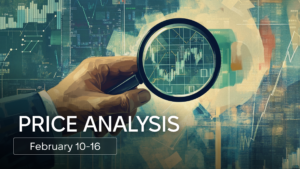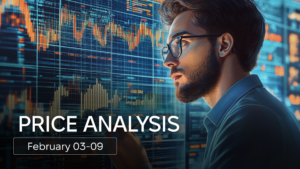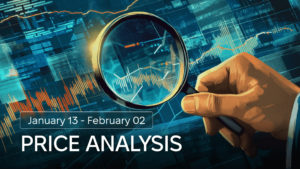Crypto futures. How does it work?

Futures are the most popular way of cryptocurrency trading. At the same time, it is on futures that users lose most of their money. The reason for this is the poor knowledge of how to use leverage and, consequently, the frequent liquidation of the trading account.
Futures is a contract to buy an asset in perspective. Unlike the spot or margin section, where traders sell an actual commodity when you buy a futures contract, you don’t actually own anything. It is an obligation to purchase the asset after a time at a set price.
Suppose you are building a house. It’s winter outside, and construction will continue in three or four months. You buy a futures contract for bricks at $1 apiece. When the time comes to expire (contract redemption) – you get the asset at the price you paid in advance, even though the brick is $3-4 in the spring or summer.
Futures can be either deliverable or cash-settled. In the first case, you must take the asset when the contract expires; in the second, its value is simply deducted in cash.
Futures are divided into fixed-term and perpetual. The fixed-term contracts will be closed at the moment of expiration. After that, the trader will make a profit or loss depending on the current asset price on the market. The perpetual futures will remain active until the investor closes it.
It is the contracts without maturity that are common on cryptocurrency exchanges. The most liquid futures exchanges can be found on Coingecko and Coinmarketcap in the “Derivatives” section.
The largest exchanges by trading volume on futures (Coinmarketcap)
Futures contracts allow traders to:
Let’s examine each point. A trade for a falling asset is called a “short”. You leave funds as collateral and get the cryptocurrency. After selling it on the market, you buy back the asset after the fall, but in a larger amount than borrowed from the exchange. You return your collateral, give the crypto to the exchange, and you keep the earned portion.
This is precisely what happens when you open each “short” on futures. Using margin trading on crypto exchanges – you would have to borrow, sell, buy back and pay off the asset manually, but futures contracts simplify the procedure to 2 buttons – open and close a deal.
The leverage is the extra money the exchange provides to the user. Having $100, leverage 5X will allow you to open trades up to $500. But the risk of a transaction increases proportionally.
Leverage setting for a trade (Bybit)
For example, you have opened a long position on BTC. In “normal” conditions, the loss of the funds will occur if the asset declines by 100%, i.e., if it is completely depreciated. But with 10X leverage, liquidation, that is the loss of the whole balance, will happen 10 times faster if the BTC falls by 10%. Hence the conclusion: the leverage has no effect on the risk of your position.
The table of correlation between leverage and trade risk
In reality, the leverage is designed for easy transaction management. Let’s imagine the situation:
The asset is BTC, the trader’s trading balance is $1000, and the risk per trade is 1% ($10). This is the amount the user will lose if he closes the position with a loss. The trader set the following data in the trade: the entry point is $20,000, and the fixing of the loss is $18,000. The difference in the position is $2000.
To calculate the volume, it is enough to divide the risk by the position difference: 10/2000 = 0.005 BTC.
Futures terminal, where it is necessary to set the transaction data (WhiteBIT)
The leverage does not play a role in this case. It only allows us to manage the trade concerning the inherent risk. A drop from 20K to 18K is a 10% decrease in an asset, but the futures allow the trader to manage the risk in his own way.
The price of a futures contract is always equal to the price of a coin in the market. The ratio of buyers to sellers can vary greatly during strong rises or falls. To balance, the exchanges have introduced a financing rate – a certain percentage charged on traders’ open positions. The rate is positive if the up trade is more active than the down trade. In this case, those who are trading long will pay those who are trading short. With a negative value, it is vice versa. Funding is accrued differently on exchanges – once every 1, 4, or 8 hours.
Financing rate (FTX) accrual history
This parameter is worth considering if you are going to hold a position open for a long time.
There are many varieties of futures, but once you understand the mechanism of their work, it is not difficult to figure out how to trade them. And then, having realized all of the risks and benefits, this information can be used for stable and profitable trading.
The content on The Coinomist is for informational purposes only and should not be interpreted as financial advice. While we strive to provide accurate and up-to-date information, we do not guarantee the accuracy, completeness, or reliability of any content. Neither we accept liability for any errors or omissions in the information provided or for any financial losses incurred as a result of relying on this information. Actions based on this content are at your own risk. Always do your own research and consult a professional. See our Terms, Privacy Policy, and Disclaimers for more details.































